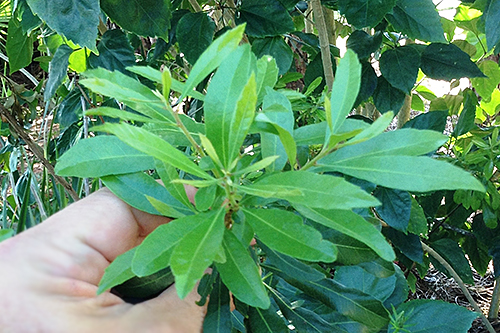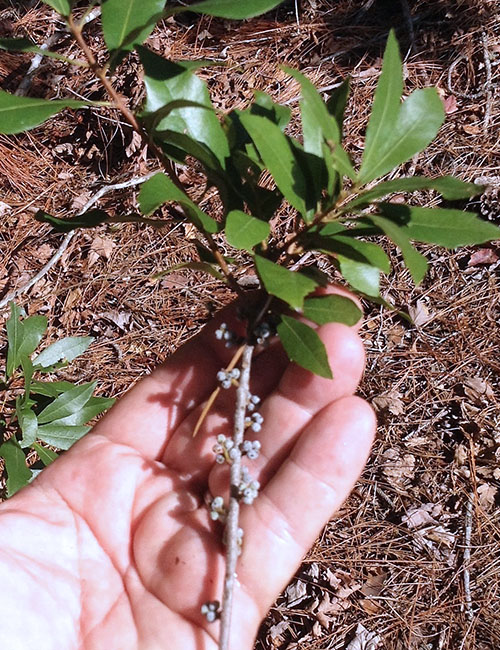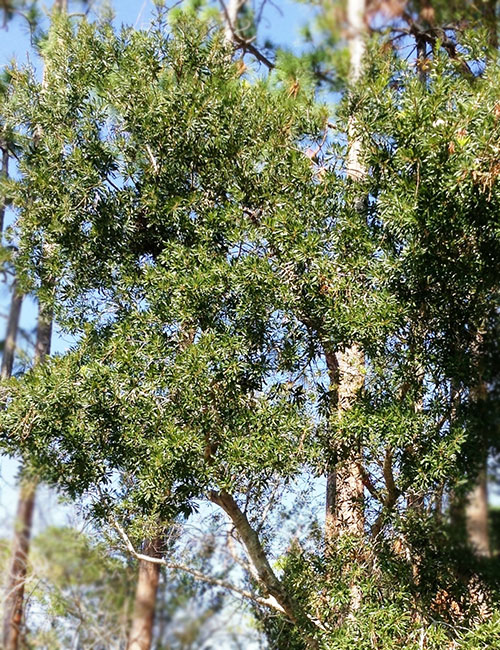Wax Myrtle
Myrica cerifera
The Wax Myrtle is most commonly a colonial shrub, spreading by suckers, but it may grow to be a multi-trunked tree to 40 feet tall with a round-topped crown. The trunks are slender, seldom reaching more than 10 inches in diameter. One of the most familiar shrubs in Florida, it grows in nearly every county and in a wide variety of habitats, from swamps to flatwoods to upland mixed forests.
The alternate, evergreen leaves are broadest toward the upper end, pointed, with a tapering base and usually a few coarse teeth above the middle, bright green above and duller below. The leaves vary from one to three (rarely six) inches in length and from one-quarter to one-half inch in width and are fragrant with a balsam-like odor when crushed. The aroma comes from amber-colored glands on both the upper and lower leaf surfaces.
Separate male and female flowers are found on the same plant. Small and in dense, axillary spikes, the flowers are generally inconspicuous except when the males are shedding copious pollen.
The fruit is round, about one-eighth inch in diameter, and coated with a thick gray-white wax which can be used to make bayberry candles. The "berries" are actually drupes with a single seed.
The dark brown wood is lightweight, soft, and brittle, and has no particular economic use.
Visit our Tree Campus homepage for more information.
Tree information provided with permission of the Florida Department of Agriculture and Consumer Services for more information visit https://www.fdacs.gov/.




